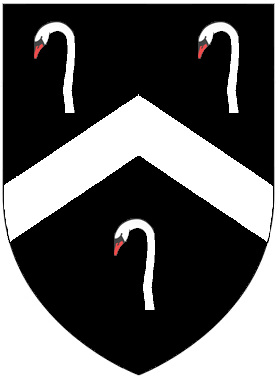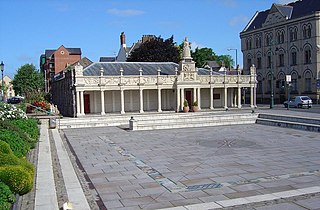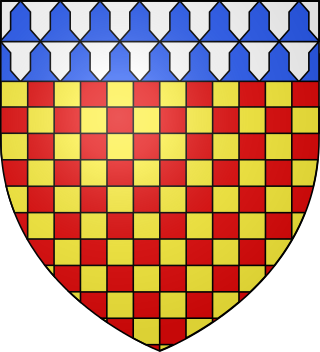
Pilton is a suburb of the town of Barnstaple, it is located about quarter of a mile north of the town centre, in the civil parish of Barnstaple, in the North Devon district, in the county of Devon, England. It was formerly a separate village. The civil parish of Pilton West covers the more rural parts of the ancient parish of Pilton that have not been incorporated into the town of Barnstaple. In 2009, the Pilton (Barnstaple) ward had a population of 4,239 living in some 1,959 dwellings. It has its own infants and junior school, houses one of Barnstaple's larger secondary schools, and one of Barnstaple's SEN specialist schools. North Devon Hospital is also within West Pilton parish. It has a Church Hall, two public houses, two hotels, and residential homes. It has residential estates of both private and public housing including flats. It also has a historic Church that dates back to at least the 11th Century.

Arlington was a manor, and is a village and civil parish in the North Devon district of Devon in England. The parish includes the villages of Arlington and Arlington Beccott. The population of the parish is 98.

John Delbridge was an English merchant from Devon who was elected six times as a Member of Parliament.

Sir John III Chichester of Hall was member of parliament for Lostwithiel in Cornwall in 1624.

Sir John Chichester (1519/20-1569) of Raleigh in the parish of Pilton, near Barnstaple in North Devon, was a leading member of the Devonshire gentry, a naval captain, and ardent Protestant who served as Sheriff of Devon in 1550-1551, and as Knight of the Shire for Devon in 1547, April 1554, and 1563, and as Member of Parliament for Barnstaple in 1559, over which borough his lordship of the manor of Raleigh, Pilton had considerable influence.

Sir Lewis Pollard his will was of 1526 when he retired of Grilstone in the parish of Bishop's Nympton, Devon, was Justice of the Common Pleas from 1514 to 1526 and served as MP for Totnes in 1491 and was a JP in Devon in 1492. He was knighted after 1509. He was one of several Devonshire men to be "innated with a genius to study law", as identified by Fuller, who became eminent lawyers at a national level. He was a kinsman of the judge and Speaker of the House of Commons Sir John Pollard.

The historic manor of Raleigh, near Barnstaple and in the parish of Pilton, North Devon, England, was the first recorded home in the 14th century of the influential Chichester family of Devon. It was recorded in the Doomsday Book of 1086 together with three other manors that lay within the later-created parish of Pilton. The manor lies above the River Yeo on the southern slope of the hill on top of which stand the ruins of the Anglo-Saxon hillfort called Roborough Castle. Part of the historic manor of Raleigh is now the site of the North Devon District Hospital.

The landed gentry and nobility of Devonshire, like the rest of the English and European gentry, bore heraldic arms from the start of the age of heraldry circa 1200–1215. The fashion for the display of heraldry ceased about the end of the Victorian era (1901) by which time most of the ancient arms-bearing families of Devonshire had died out, moved away or parted with their landed estates.

Ash in the parish of Braunton in North Devon is a historic estate listed in the Domesday Book. The present mansion, known as The Ash Barton estate is a Grade II* listed building.

Richard Stevens (1702–1776) of Winscott in the parish of Peters Marland, Devon, was Member of Parliament for Callington in Cornwall (1761–1768).

Pilton House in the parish of Pilton, near Barnstaple, North Devon, Ex31, is an historic grade II listed Georgian mansion house built in 1746 by Robert Incledon (1676-1758), twice Mayor of Barnstaple, who was from nearby Braunton. It is situated almost in the centre of the ancient town of Pilton, but had formerly extensive grounds covering at least 20 acres, which extended down "Pilton Lawn", now built over, to the River Yeo. It later served as the residence for various Members of Parliament for Barnstaple, for which it was well suited being only a 10-minute walk from the centre of that town, yet in a secluded situation with extensive grounds, and sufficiently large and grand for entertaining borough officials and electors.

Robert Incledon (1676–1758) of Pilton House, Pilton, near Barnstaple in North Devon, was a lawyer of New Inn, London, a Clerk of the Peace for Devon, Deputy Recorder of Barnstaple and was twice Mayor of Barnstaple, in 1712 and 1721. In 1713 as mayor he supervised the building of the Mercantile Exchange on Barnstaple Quay, as recorded on the building by a contemporary brass plaque and sculpture of his armorials. He built Pilton House in 1746.

Queen Anne's Walk is a grade I listed building in the town of Barnstaple, North Devon, completed in 1713 as a meeting place for the town's merchants. It is believed to have been designed by the architect William Talman, on the basis of its similarity to his work at the Hall in Drayton, Northamptonshire. It was promoted and financed by the thirteen members of the Corporation of Barnstaple whose armorials are sculpted on and above the parapet, and the work was overseen by Robert Incledon (1676–1758), Mayor of Barnstaple in 1712–13. It has been owned for many decades by North Devon District Council, which currently (2014) leases it to Barnstaple Town Council, and now trades as The Cafe on the Strand.

Great Fulford is an historic estate in the parish of Dunsford, Devon. The grade I listed manor house, known as Great Fulford House, is about 9 miles west of Exeter. Its site was said in 1810 to be "probably the most ancient in the county". The present mansion house is Tudor with refurbishment from the late 17th century and further remodelling from about 1800. The prefix "Great" dates from the late 17th century and served to distinguish it from the mansion house known as "Little Fulford" in the parish of Shobrooke, Devon, about 8 miles to the north-east, also owned briefly by Col. Francis Fulford (1666–1700), as a result of his marriage to the heiress of the Tuckfield family. Great Fulford has been the residence of the Fulford family, which took its name from the estate, from the reign of King Richard I (1189–1199) to the present day. There are thus few, if any, families in Devonshire of more ancient recorded origin still resident at their original seat. In 2004 the estate comprised 3,000 acres.

Sir Nicholas II Hooper (1654-1731) of Fullabrook, Braunton and Raleigh, Pilton in Devon, was a lawyer who served as Tory Member of Parliament for Barnstaple 1695-1715.

Hawkridge in the parish of Chittlehampton in North Devon, England, is an historic estate, anciently the seat of a junior branch of the Acland family which originated at nearby Acland, in the parish of Landkey and later achieved great wealth and prominence as the Acland Baronets of Killerton, near Exeter. The former mansion house is today a farmhouse known as Hawkridge Barton, a grade II* listed building. The Devon historian Hoskins (1959) stated of Hawkridge: "Externally there is nothing remarkable except a decaying avenue of ancient walnuts, so often the first indication of a 16th or 17th century mansion". The interior contains a fine plaster heraldic overmantel showing the arms of Acland impaling Tremayne, representing the 1615 marriage of Baldwin Acland (1593–1659) of Hawkridge and Elizabeth Tremayne.

Pill is an historic estate in the parish of Bishop's Tawton, near Barnstaple, in North Devon, England. The surviving 18th-century mansion house known as Pill House is a grade II* listed building situated close to the east bank of the River Taw about 1 mile south of the historic centre of Barnstaple and 1 mile north of Bishop's Tawton Church. It was long a seat of a junior branch of the Chichester family of Hall, Bishop's Tawton. At some time before 1951 it was converted into apartments and is at present in multiple occupation.

The recorder of Barnstaple was a recorder, a form of senior judicial officer, usually an experienced barrister, within the jurisdiction of the Borough of Barnstaple in Devon. He was usually a member of the local North Devonshire gentry. The position of recorder of any borough carried a great deal of prestige and power of patronage. The recorder of a borough was often entrusted by the mayor and corporation to nominate its Members of Parliament, as was the case with Sir Hugh I Pollard, Recorder of Barnstaple, who in 1545 nominated the two MP's to represent the Borough of Barnstaple. In the 19th century a recorder was the sole judge who presided at a Quarter Sessions of a Borough, a "Court of Record", and was a barrister of at least five years' standing. He fixed the dates of the Quarter Sessions at his own discretion "as long as he holds it once every quarter of a year", or more often if he deemed fit.

Richard Chichester (1423-1496), lord of the manor of Raleigh in the parish of Pilton, near Barnstaple, North Devon, was twice Sheriff of Devon, in 1469 and 1475.
The lord of the manor of Swimbridge in Devon, England, until the 20th century was the Duke of Bedford, of Woburn Abbey in Bedfordshire and of Endsleigh Cottage in Devon, whose ancestor John Russell, 1st Earl of Bedford (c.1485–1555) of Chenies in Buckinghamshire and of Bedford House in Exeter, Devon, was appointed Lord Lieutenant of Devon by King Henry VIII and obtained large grants of land in that county following the Dissolution of the Monasteries. Thus there is no manor house in Swimbridge as the lord was non-resident. The location of the court house where manorial business was transacted may have been Ernesborough.































